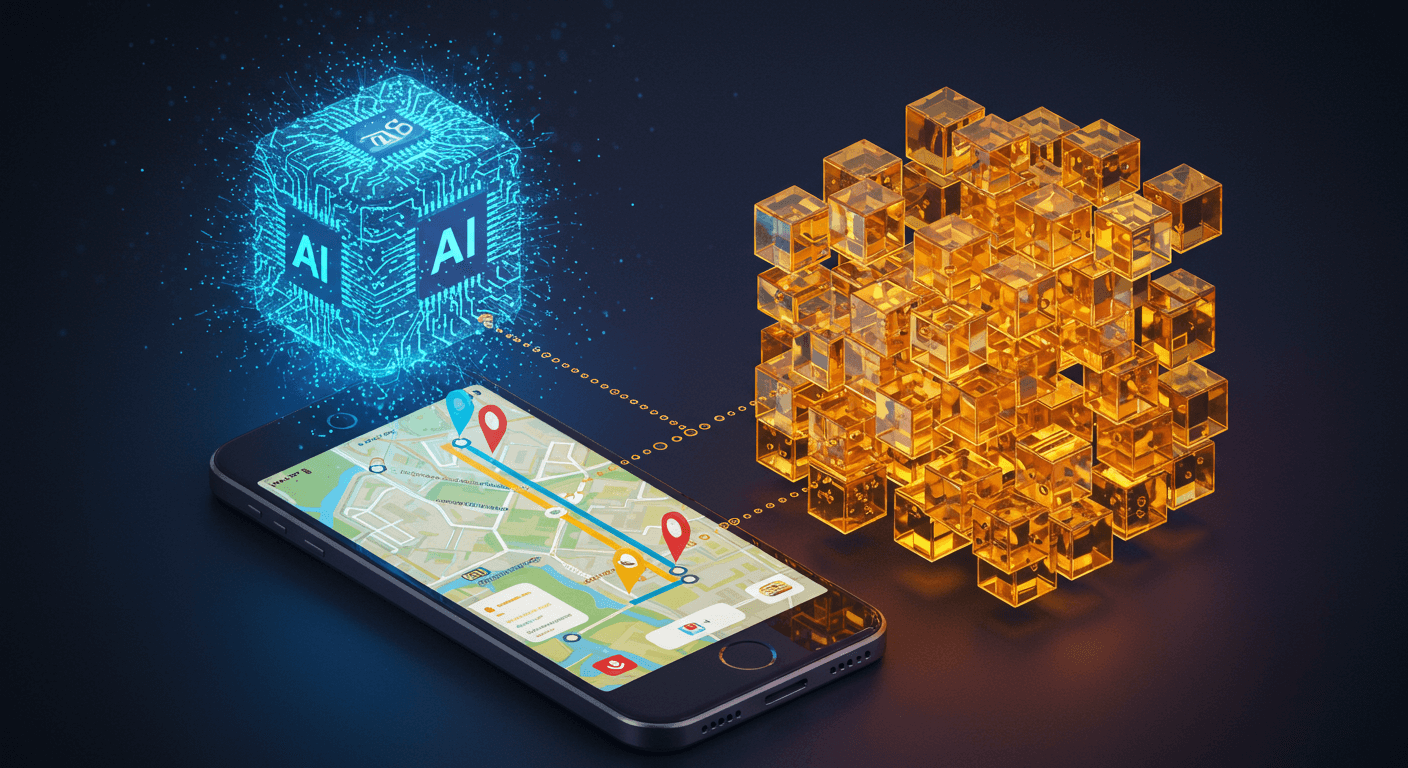
How Blockchain and AI is Shaping Navigation Technology in 2025
Navigation Technology in 2025 is experiencing a transformative shift thanks to the integration of blockchain and artificial intelligence (AI). These technologies work together to enhance data privacy, ensure transparency, and improve the overall accuracy of navigation information. This article explores how blockchain secures data through immutable records and community voting systems, while AI adapts to user habits to deliver efficient routing solutions. An exemplary case is MapMetrics, a navigation app that leverages both technologies along dedicated hardware to create a robust system for reliable map data management.
Blockchain Technology: Enhancing Privacy and Transparency
Blockchain technology provides a secure and decentralized way to manage navigation data. By recording every transaction or update on a distributed ledger, blockchain ensures that data changes are both transparent and immutable. This means that when navigation information such as routes, traffic conditions, or map updates is recorded, each entry can be traced back to its origin. The inherent design of blockchain allows users to trust the data without having to rely solely on a single source. Privacy is maintained as data can be anonymized while still being verifiable, and this contributes to overall data accuracy.
Data Accuracy and Community Voting Mechanisms
A notable feature of blockchain in navigation technology is the integration of a community voting system. When new data is introduced, it does not automatically become part of the navigational dataset. Instead, the data is subject to community review. Users, acting as validators, can vote on the authenticity and accuracy of the information. This collective process ensures that only verified and reliable data is integrated into the blockchain.
The community voting mechanism acts as an additional layer of scrutiny. If discrepancies are found, the process allows for corrections before the data is permanently recorded. This democratic approach not only increases the overall quality of the information but also builds trust among users, as they are directly involved in maintaining data integrity.
Artificial Intelligence: Learning from User Behavior
Artificial intelligence plays a critical role in modern navigation systems by analyzing user behavior and historical data to optimize route selection. AI algorithms observe patterns such as frequently used routes, peak traffic times, and even environmental factors that may affect travel. This continuous learning process allows navigation systems to adjust in real-time, offering directions that are tailored to individual user habits.
For example, if a user frequently opts for routes that avoid heavy traffic or prefer scenic paths, AI can learn these preferences and incorporate them into future navigation suggestions. This adaptive quality not only improves travel efficiency but also personalizes the experience, making navigation both intuitive and responsive to user needs.

MapMetrics: Merging AI, Blockchain, and Specialized Hardware
One practical example of how these technologies converge is seen in MapMetrics, a navigation app that relies on both blockchain and AI. MapMetrics uses blockchain to securely store and validate map data. This data is continuously vetted through a community-based voting system, ensuring that any update, be it a new road layout or real-time traffic alert, is accurate and untampered.
What sets MapMetrics apart is its use of dedicated hardware called SPT (Special Position Tracker). The SPT is designed to capture precise positional data, which is crucial for maintaining high data accuracy in navigation. Once the SPT collects the data, it is uploaded to the network, where it undergoes the same rigorous community verification process. This combination of specialized hardware and advanced technology ensures that every piece of information is reliable.
The collaboration between AI and blockchain within MapMetrics ensures that the app not only processes and learns from user habits but also maintains the integrity of the map data through community oversight. This comprehensive approach enhances the reliability of Navigation Technology in 2025, making it a trusted tool for daily travel.
결론
The fusion of blockchain and AI is fundamentally reshaping Navigation Technology in 2025. Blockchain offers a secure, transparent framework for recording navigation data, while community voting systems guarantee that this data remains accurate and untampered. In parallel, AI continuously refines navigation suggestions by learning from user behavior and adapting to changing travel patterns. With the integration of dedicated hardware like MapMetrics’ SPT, these technologies collectively create a reliable and efficient navigation ecosystem.
As these innovations continue to develop, users can expect more precise, personalized, and secure navigation solutions. This ongoing evolution represents a significant step forward in how navigation systems are built and maintained, ensuring that they meet the demands of modern travelers with both reliability and efficiency.


